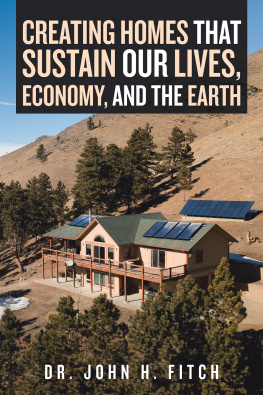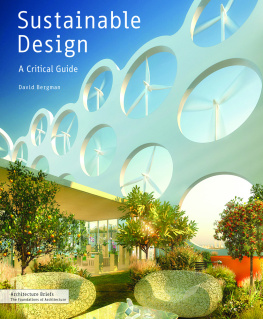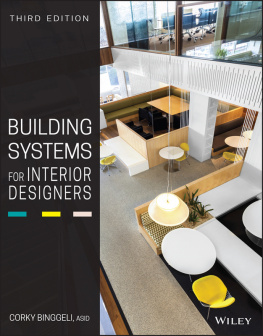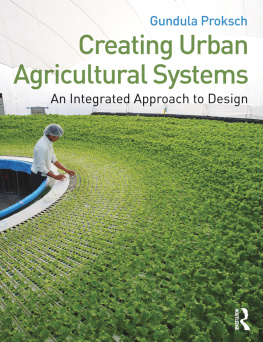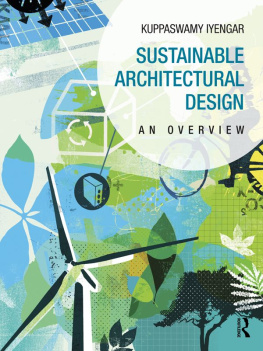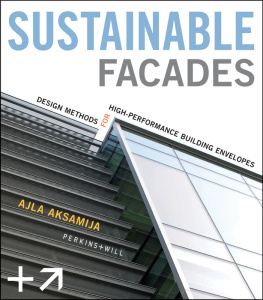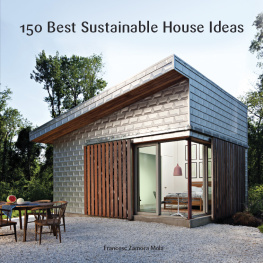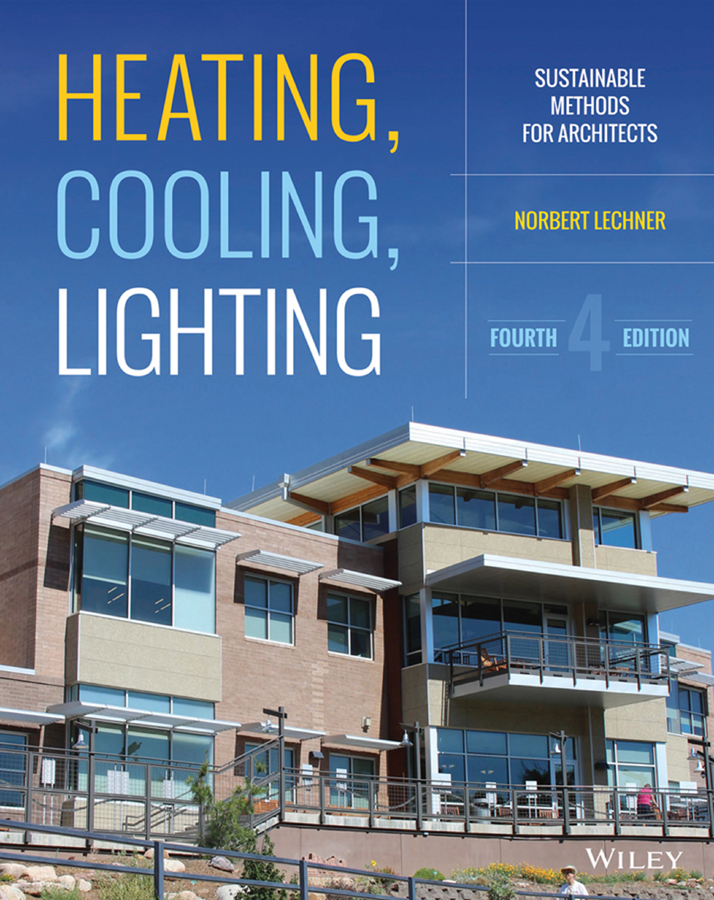
Contents
List of Illustrations
List of Tables
Pages
Guide
Heating, Cooling, Lighting
Sustainable Design Methods for Architects
FOURTH EDITION
Norbert Lechner
Cover photograph: Durango Library courtesy of Norbert Lechner
Cover design: C. Wallace
Copyright 2015 by John Wiley & Sons, Inc. All rights reserved.
Published by John Wiley & Sons, Inc., Hoboken, New Jersey.
Published simultaneously in Canada.
No part of this publication may be reproduced, stored in a retrieval system, or transmitted in any form or by any means, electronic, mechanical, photocopying, recording, scanning, or otherwise, except as permitted under Section 107 or 108 of the 1976 United States Copyright Act, without either the prior written permission of the Publisher, or authorization through payment of the appropriate per-copy fee to the Copyright Clearance Center, 222 Rosewood Drive, Danvers, MA 01923, (978) 750-8400, fax (978) 646-8600, or on the web at www.copyright.com. Requests to the Publisher for permission should be addressed to the Permissions Department, John Wiley & Sons, Inc., 111 River Street, Hoboken, NJ 07030, (201) 748-6011, fax (201) 748-6008, or online at www.wiley.com/go/permissions.
Limit of Liability/Disclaimer of Warranty: While the publisher and author have used their best efforts in preparing this book, they make no representations or warranties with the respect to the accuracy or completeness of the contents of this book and specifically disclaim any implied warranties of merchantability or fitness for a particular purpose. No warranty may be created or extended by sales representatives or written sales materials. The advice and strategies contained herein may not be suitable for your situation. You should consult with a professional where appropriate. Neither the publisher nor the author shall be liable for damages arising herefrom.
For general information about our other products and services, please contact our Customer Care Department within the United States at (800) 762-2974, outside the United States at (317) 572-3993 or fax (317) 572-4002.
Wiley publishes in a variety of print and electronic formats and by print-on-demand. Some material included with standard print versions of this book may not be included in e-books or in print-on-demand. If this book refers to media such as a CD or DVD that is not included in the version you purchased, you may download this material at http://booksupport.wiley.com. For more information about Wiley products, visit www.wiley.com.
Library of Congress Cataloging-in-Publication Data:
Lechner, Norbert, author.
Heating, cooling, lighting : sustainable design methods for architects/Norbert Lechner.Fourth Edition.
pages cm
Includes index.
ISBN 978-1-118-58242-8 (cloth)ISBN 978-1-118-82172-5 (pdf)ISBN 978-1-118-84945-3 (epub)
1. Heating. 2. Air conditioning. 3. Lighting. 4. Sustainable buildingsDesign and construction. I. Title.
TH7222.L33 2014
697dc23
2013042723
FOREWORD TO THE FOURTH EDITION
The compelling words written by James Marston Fitch in 1991 in the Foreword to the first edition (which follows) are still valid, but the stakes are now much higher. Because the fate of the planet is at stake, it is no longer just a question of following a particular architectural or design philosophy. Buildings consume about half the energy produced in the United States and around the world. Today, more than 50 percent of the worlds population lives in cities, a figure that is likely to rise to 60 percent over the next two decades. It is clear that timing is critical: with 900 billion ft2 (80 billion m2) of urban environment projected to be built and rebuilt in the next twenty years (an area equal to three times the total building stock of the United States), we are presented with an extraordinary window of opportunity to meet present and looming threats. Our best chance of doing so is to ensure that the architecture, planning, and development community, the primary agents shaping the built environment through design and construction, have access to the knowledge and tools necessary for the transition to a decarbonized, sustainable, and adaptive world.
Professor Lechners book describes how to achieve this transition in the built environment. The book illustrates the many sustainable strategies available to designers and provides the information needed during the early phases of the design process, when a buildings energy consumption patterns are defined. By using the strategies presented in this book, much of the energy consumed to heat, light, and cool buildings can be dramatically reduced.
Professor Lechners book is also an important resource for those architects who are concerned about the aesthetic aspects of sustainability. He convincingly explains and demonstrates how lessons learned from vernacular architecture can be combined with the best of modern ideas to create low-impact yet beautifully designed humane architecture. Since carbon neutral buildings can be fully powered by renewable resources, a future of low-impact buildings is not only necessary but also elegantly achievable.
EDWARD MAZRIA, AIA
FOREWORD TO THE FIRST EDITION
Professor Lechners book differs from most of its predecessors in several important respects: (1) he deals with the heating, cooling, and lighting of buildings, not as discrete and isolated problems, but in the holistic sense of being integral parts of the larger task of environmental manipulation; (2) he deals with the subjects not merely from the engineers limited commitment to mechanical and economic efficiency but from the much broader viewpoint of human comfort and physical and psychic well being; (3) he deals with these problems in relation to the central paradox of architecturehow to provide a stable, predetermined internal environment in an external environment that is in constant flux across time and space; and finally, (4) he approaches all aspects of this complex subject from a truly culturalas opposed to a narrowly technologicalperspective.
This attitude toward contemporary technology is by no means hostile. On the contrary, Professor Lechner handles it competently and comprehensively. But he never loses sight of the fact that the task of providing a truly satisfactory enclosure for human activity is that one must view the building as a whole. He points out, quite correctly, that until the last century or so, the manipulation of environmental factors was, of necessity, an architectural problem. It was the building itselfand only incidentally any meager mechanical equipment that the period happened to affordthat provided habitable space. To illustrate this point, he makes continuous and illuminating analysis to both high-style and vernacular traditions, to show how sagaciously the problems of climate control were tackled by earlier, prescientific, premechanized societies.
This is no easy-to-read copybook for those designers seeking shortcuts to glitzy postmodern architecture. On the contrary, it is a closely reasoned, carefully constructed guide for architects (young and old) who are seeking an escape route from the energy-wasteful, socially destructive cul-de-sac into which the practices of the past several decades have led us. Nor is it a Luddite critique of modern technology; to the contrary, it is a wise and civilized explication of how we must employ technical and scientific knowledge if we in the architectural field are to do our bit toward avoiding environmental disaster.
Next page

